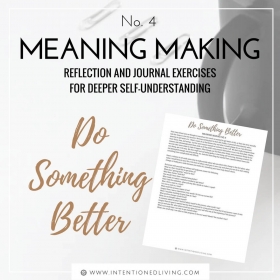
To-do lists – do those words cause you to smile with enthusiasm or wince with despair?
Everyone approaches their to-do lists with its tasks and responsibilities differently depending on several factors such as their schedule, time availability, and the number of various responsibilities they have (e.g. school, work, children, pets, others to care for, creative endeavors, health needs, learning style, etc.). Some also approach their to-do’s in a manner that has been learned, likely instilled in them through the parenting and schooling they received. We grow up with models around us and we pick up on their strategies, feelings and reactions, and successes and failures in this area. As we grow older into our own selves, we can more objectively evaluate these systems and make decisions for parts we are going to keep and others we decide to let go of. For some this process is quite explicit and intentional, while for others it’s a process that takes place subconsciously right below our field of clear awareness.
Some focus on perfecting and mastering the art of getting-stuff-done and others haven’t thought about it much and have a more go-with-the-flow approach. This post is for those folks who are looking to improve their approach, who are tired of feeling like they can’t get any traction over their to-do lists, and those who are starting to feel hopeless that they will ever reach a point where they can feel more relaxed, accomplished, and confident.
First, start by evaluating your current strategy. Be honest with yourself here and create a clear narrative describing your approach. Since the desire here is to aim for a getting-stuff-done mindset versus a go-with-the-flow mindset, and to be as objective as possible, it can be helpful to write down what you notice.
Pinpoint and describe the following:
- How do you keep your list? Handwritten? Mentally maintained? Electronic?
- Do you have one or multiple lists? If more than one, what differs between them?
- How do you care for your list? How do you keep it up-to-date and accurate?
- How often do you evaluate the items? Weekly? Daily? Hourly? Several times a day?
- Notice what kind of things you put on your list. Are there certain categories or types of tasks?
- How do you prioritize your list? Do you prioritize your list?
- What works in your current system?
- What causes problems in your current system?
Now that you’ve reflected on your strategies in depth, hopefully you’ve pinpointed the areas that need attention. For example, when I guide folks through this exercise, there usually is a time when their response to one of the questions is coupled with a change in emotion – either a self-admitting giggle or a stronger weight of distress, for example. If you found yourself with one of these reactions zoom into what led to that as this may clearly show you where your strategy needs to be improved to be more helpful. For example, you may find that you are great at making lists and even have specific notepads, notebooks, or bulletin boards to put them on, but you found that you don’t have a method of prioritizing them or keeping them accurate and up-to-date. You like putting things on the list and when you do you feel a sense of control, satisfaction, and motivation but that usually doesn’t end up lasting too long because it soon becomes overshadowed by those feelings of negative self-judgment, stress, and despair when you realize that something important that should have gotten done was not.
In the above example, the list – the thing that was supposed to be a help and aide, was not. When this happens, we can feel stuck, get stuck, and stay stuck.
Why not try something new?
This is not an exhaustive list and we each must find what works best for us and our lifestyle. If something is not working, try something new.
1. Prioritize.
Here is where you really need to hold a realistic mind-frame. It would be great if we could complete the 10 big projects on our list in one day but it’s likely that’s just not realistically possible. Instead, put at the top of your list the 3 things (or even just 1 or 2) that would make the biggest impact if you did them today.
2. Estimate and know the time a task takes to complete.
This is an important step because it helps us again be realistic and objective since there is a set amount of time in each day. It’s common that when we have a task to do, especially one that we would rather prefer not to do, that we attach emotions to it that skew our interpretations of how long it will take or how hard it will be. For example, for someone who dislikes say completing forms, they may put off this task thinking that the form will be confusing, lengthy to complete, and tedious. Their negative emotions color their thoughts to include that it will be a terrible experience, it will take hours and hours to complete, they will be exhausted at the end, and won’t have time or energy to enjoy other things. They put it off time and time again until deadlines and outside factors compel them to approach the task, they do it, and they realize it took much less time than expected and was not difficult at all. So, objective estimates of how long it may take to complete a task is very important.
3. Make sure you see your list every day.
Make sure that your list is easily accessible to you. There’s no point in making a to-do list for tasks to be completed at home if you keep that list together with your to-do list at work. If you like to keep a written list, make sure a pen or pencil is always with it. If you like to keep an electronic one on your smartphone, make sure that app is on your homescreen and not hidden in a folder.
4. Set a routine for caring for your list.
Set up a daily routine for when and how often you attend to your list. Some folks find it works better for them to review their list first thing in the morning to set the 3 (or 1 or 2) priorities for the day. Others find that taking these steps the night before allows them to rest better at night and wake up confident knowing that a plan is in place. Also, just as you review the list before starting on the tasks, it’s helpful to review the list as tasks are completed or at the end of the day. If you review the list as you complete a task, you can quickly re-prioritize and perhaps can accomplish something else if time allows.
5. Put together some add-on strategies.
The more responsibility areas we need to attend to, the more likely we may experience difficulty not only prioritizing but also remembering. Help boost your success in completing your to-do’s by putting into action some add-on strategies such as setting reminders in your calendar/phone/or both, and placing visual reminders where you will definitely see them such as post-its on your bathroom mirror, car dash board, or computer screen. Also, put everything in place for a successful kickstart to a task by setting in place any tools or equipment you may need, and removing any obstacles that would be a deterrent. Another add-on is to break tasks into smaller tasks and prioritize these on your to-do list as well.
6. Be kind to yourself and acknowledge the things you have accomplished.
We will always have things to do – those we like doing and those we do not, so be easy on yourself in the process. It takes time to learn what works for us and get used to putting these habits in place. Take the time each day to pat yourself on the back for the tasks you were able to complete, no matter how small. And reward yourself with something kind you do for yourself since tomorrow is another day with new tasks!
Additional reading you might enjoy: Multitasking Is A Four Letter Word: Be Intentional.







